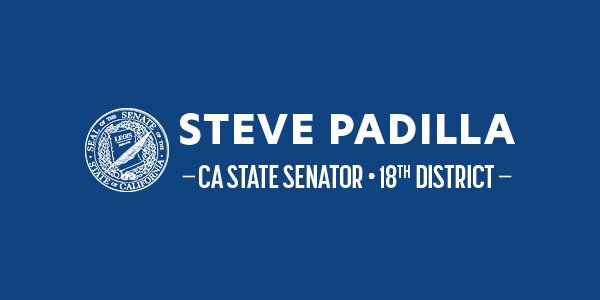Overview of California’s New AI Law
California’s new AI legislation, effective July 1, 2023, mandates that automated systems disclose their non-human nature during interactions with humans. Known as the Bolstering Online Transparency (BOT) Act, this law aims to enhance transparency and trust in digital communications, ensuring users know when they are engaging with AI-driven bots rather than real people. The legislation targets preventing deception in online spaces, including consumer interactions, political campaigning, and social media. It applies to various automated systems like chatbots, virtual assistants, and AI in marketing and sales, requiring clear identification to protect consumers from misleading practices. Non-compliance could lead to penalties, including fines. This regulation underscores California’s commitment to ethical AI governance and sets a precedent for other regions. Overall, the law promotes accountability and ethical standards in AI use, positioning California as a leader in AI regulation.
Background and Context
The rapid advancement of AI technologies has transformed sectors like customer service and marketing, with chatbots increasingly simulating human conversation. This rise in AI-driven interactions raises ethical concerns about transparency, as people may not realize they’re communicating with machines. California, a leader in tech regulation, addresses this with the Bot Disclosure Law (California Senate Bill No. 1001). This law requires that bots used to incentivize sales or influence votes must disclose their non-human nature, aiming to prevent online manipulation and ensure informed decision-making. The legislation responds to concerns about AI misuse in politics and commerce, including misinformation and fraud. By mandating disclosure, California seeks to mitigate these risks and promote ethical AI usage. This law reflects a societal demand for transparency and could serve as a model for other regions to ensure responsible AI integration.
Key Provisions of the Law
California’s Senate Bill 1001 enhances transparency and trust in online interactions with bots. It mandates clear disclosure when a bot is used to incentivize sales or influence election votes, especially if designed to mimic humans and potentially deceive users. This aims to prevent manipulation and misinformation. The disclosure must be clear and conspicuous, though its exact form is flexible, allowing adaptation across platforms. Enforcement is managed by California’s Attorney General, with penalties for violators to ensure compliance. Exemptions exist for bots used internally by businesses for non-deceptive purposes, like customer service. This law balances legitimate bot use with consumer protection, setting a precedent for other regions. By mandating transparency, it seeks to enhance accountability and trust in digital communications.
The Impact on AI Technology
California’s new law requiring bots to disclose their non-human status is set to significantly impact AI technology by addressing ethical and transparency concerns. Developers must now design AI systems with clear identification mechanisms, potentially spurring innovations in user interface and natural language processing. This law is expected to influence AI research, particularly in human-computer interaction and ethics, prompting new methodologies for transparent AI interactions. Businesses relying on AI-driven customer interactions may face increased compliance costs but could also benefit from emphasizing ethical practices to enhance consumer trust. California’s legislation may inspire similar regulations globally, promoting a unified approach to AI governance and fostering international dialogue on ethical AI use. Overall, the law aims to drive transparency, address ethical issues, and encourage innovations that prioritize user trust, shaping a more responsible AI ecosystem.
Changes in AI Development
California’s new law requiring AI bots to disclose their non-human nature is set to significantly impact AI development. This mandate will drive developers to focus on transparency by integrating clear disclosure mechanisms, ensuring users know when they interact with a bot. This could involve distinctive communication cues or explicit statements to prevent ambiguity (Source 1). The law also highlights the importance of ethics in AI, prompting developers to prioritize ethical design principles. This may lead to industry standards promoting honesty and integrity, potentially influencing legislation elsewhere (Source 2). Developers might innovate ways to integrate disclosures without disrupting interaction flow, using advanced natural language processing and user interface design (Source 3). The law could also lead to more user-friendly and trustworthy AI systems, enhancing user trust and satisfaction. This shift towards transparency and ethics may increase AI acceptance and reliance across sectors (Source 4). Overall, California’s legislation is expected to catalyze a shift towards more transparent, ethical, and user-centric AI development, potentially influencing global regulations (Source 5).
Implications for AI Companies
California’s new law requiring bots to disclose their artificial nature significantly impacts AI companies. This legislation mandates that bots clearly identify themselves in online interactions, prompting AI companies to prioritize transparency in their products. To comply, companies might need to develop new technologies or modify existing systems, which could increase operational costs. This focus on transparency may lead to more ethical AI practices, emphasizing user trust and engagement.
The law could also alter the competitive landscape, as companies that quickly adapt by integrating effective disclosure mechanisms may gain a competitive edge by enhancing their reputation for trustworthiness. Conversely, non-compliant companies risk legal issues and brand damage. Balancing disclosure with seamless user experience poses a challenge, requiring Innovation to inform users of a bot’s presence without disrupting interaction.
California’s regulation may influence broader practices, as other states or countries could adopt similar laws. Overall, the legislation encourages AI companies to focus on transparency and ethics, potentially leading to advancements in AI integration and a more trustworthy digital ecosystem.

The Role of Bots in Digital Communication
Bots are crucial in digital communication, transforming interactions for individuals and businesses. They enhance efficiency and user experience by automating tasks from simple to complex. In customer service, chatbots provide immediate responses to inquiries, improving satisfaction and allowing human agents to tackle complex issues. Bots also manage social media by scheduling posts, engaging followers, and analyzing metrics, enabling a consistent online presence without heavy resource investment. They are vital in data collection, analyzing market trends, consumer behavior, and competitor strategies, helping businesses make informed decisions. Bots personalize communication through AI, delivering tailored messages and recommendations, which is especially valuable in e-commerce to influence purchases. Despite these benefits, bots raise ethical and security concerns, such as potential misuse for spreading misinformation, leading to calls for transparency and accountability. Overall, while bots enhance communication through customer service, social media management, data analytics, and personalization, ethical guidelines are essential to maintain digital integrity.
Current Usage of Bots
Bots are increasingly prevalent across sectors due to AI and Machine Learning advancements. In customer service, bots enhance experiences and efficiency by handling inquiries and transactions, with chatbots engaging customers on websites and social media (Sources 1 & 2). In online marketing, bots automate tasks like email marketing and Data Analysis, streamlining efforts and enabling personalized marketing through user behavior analysis (Sources 3 & 4). The financial industry uses bots for algorithmic trading and fraud detection, executing trades efficiently and monitoring for suspicious activities (Source 5). On social media, bots are used for content scheduling and analytics, but also raise concerns for generating fake followers and spreading misinformation (Source 6). In smart homes, bots enhance functionality by enabling voice-activated control and managing schedules (Source 7). While bots optimize processes and enhance user experiences, their widespread adoption raises transparency and ethical challenges, prompting legislative actions like California’s new law (Source 8).
Potential Benefits and Risks
California’s new law requiring bots to disclose their non-human identity offers significant benefits but also presents potential risks.
Benefits
The law promotes transparency and authenticity in digital interactions by ensuring users are aware when they are engaging with bots. This awareness helps reduce misinformation and deceptive practices, allowing users to critically evaluate the information they receive. It also enhances consumer protection by mitigating fraudulent activities, such as phishing schemes, thereby reducing the success rate of scams. Moreover, the legislation encourages ethical AI development by setting a precedent for transparency, pushing developers to prioritize accountability and societal impacts.
Risks
However, the law could stifle innovation due to increased regulatory burdens, diverting resources from AI advancement to compliance efforts. There is also a risk of circumvention, as malicious actors may find ways to disguise bots, undermining the law’s effectiveness. Additionally, disclosing bot identity could lead to privacy concerns if user interactions are collected and mishandled. Balancing these benefits and risks is crucial for the law to achieve its intended outcomes without negative consequences.

Legal and Ethical Considerations
California’s Bolstering Online Transparency (BOT) Act mandates that bots disclose their non-human nature, addressing legal and ethical concerns about AI misuse in digital communications. The law aims to protect consumers from being deceived by AI-driven interactions that can manipulate public opinion or spread misinformation. Legally, it enhances transparency in digital interactions, aligning with consumer protection laws by ensuring users know when they are engaging with bots, thus enabling informed decision-making. Ethically, the legislation emphasizes the responsibility of AI developers to maintain honesty in digital communications, crucial for user trust. It also highlights the need to address potential biases in AI systems, reminding operators of their ethical duty to ensure fairness. The BOT Act presents compliance challenges due to AI’s rapid evolution, necessitating ongoing dialogue among lawmakers, technologists, and ethicists to refine legal and ethical guidelines. Overall, the law underscores the importance of transparency and accountability in AI deployment.
Transparency and Accountability
California’s new law mandating bots to disclose their non-human nature marks a significant shift toward transparency and accountability in the digital realm. This legislation requires online automated accounts to clearly identify themselves, aiming to combat deception and enhance trust in online interactions. By ensuring users know when they’re interacting with a bot, the law addresses concerns about AI-driven misinformation and manipulation, prevalent on social media and digital communications. Transparency is crucial for ethical AI deployment, and this law sets a precedent for AI technologies in the public sphere. It empowers users to critically assess online information, especially where bots influence public opinion, such as in political campaigns or marketing. Additionally, the law enhances accountability by holding bot operators responsible for disclosure, creating a legal framework to mitigate the risk of bots spreading false information. This aligns with broader efforts to regulate AI responsibly, safeguarding public interest and maintaining digital integrity.
Privacy Concerns
The rise of AI-driven bots has transformed online interactions, raising significant privacy concerns. California’s new law, requiring bots to disclose their non-human identity, aims to enhance transparency and protect user privacy. Bots can collect personal data without users’ explicit consent, posing risks of privacy violations and data misuse. The law empowers users to make informed decisions by ensuring they know when interacting with bots, enhancing control over their data. It also deters malicious activities like phishing and misinformation by mandating bot disclosure, reducing privacy breach risks. However, challenges remain in enforcing the law, particularly with sophisticated AI mimicking human interactions. Questions about compliance and penalties could undermine its effectiveness. While the law marks progress in addressing privacy issues, it underscores the challenges in regulating rapidly evolving technology. As AI advances, further measures may be needed to ensure robust privacy protections.
How This Law Affects Consumers
California’s new law requiring bots to disclose their non-human identity significantly impacts consumers by enhancing transparency in digital interactions. It mandates that bots clearly identify themselves, reducing the likelihood of consumers being misled or deceived online. This transparency helps protect consumers from scams and misinformation, as bots are often used in spreading false information or conducting fraudulent schemes. By ensuring consumers know when they interact with bots, the law mitigates the risk of deceptive practices, empowering consumers to make informed choices and critically evaluate automated information. Additionally, the law enhances consumer trust in online platforms, as the assurance of bot disclosure regulations encourages more confident engagement in digital services. This trust is crucial for digital commerce growth, as it encourages participation without fear of deception. Furthermore, the law could influence consumer expectations, driving demand for higher transparency and accountability, potentially leading to further regulatory measures and technological advancements in automated interactions.
Enhanced User Awareness
California’s new law requiring bots to disclose their non-human nature aims to enhance user awareness and transparency in digital interactions. This legislation addresses concerns about automated systems deceiving users by appearing human, a growing issue as AI becomes more prevalent in online communication. By ensuring users know when they’re interacting with a bot, the law fosters trust and allows users to make informed decisions, especially important when bots influence opinions or collect personal data. This transparency could also drive improvements in bot design and ethics, as developers strive to meet user expectations. California’s mandate not only protects consumers but also sets a precedent for other regions, highlighting the importance of integrating AI responsibly. Enhanced user awareness is thus vital in preserving autonomy and trust as AI continues to evolve in society.
Consumer Protection Measures
California’s new law requiring bots to disclose their non-human identity is a significant step in consumer protection, targeting the issue of bots posing as humans, which can lead to misinformation and fraud. The law mandates bots to identify themselves in online interactions to prevent consumer deception, especially in financial, political, or customer service settings. This transparency allows consumers to adjust their expectations and interactions, reducing the risk of scams. The law also emphasizes accountability, requiring bot operators to disclose their automated nature, promoting ethical AI deployment. This accountability not only safeguards consumers but fosters the development of transparent AI systems. Additionally, it enhances consumer privacy by making individuals more cautious about sharing personal data with bots. California’s approach sets a precedent for other regions, aiming to create a safer digital environment by prioritizing transparency and accountability in AI and automation.
The Response from Tech Companies
California’s new law requiring bots to disclose their non-human identity has sparked varied reactions from tech companies. While some, like Google and Facebook, support the regulation for promoting transparency and ethical AI, others, particularly smaller firms, worry about the practical challenges and costs of compliance. These smaller companies, which often rely on automated systems, fear the law could disrupt their operations and strain limited resources. Additionally, there’s concern that strict regulations might hinder innovation by making companies cautious about deploying new AI technologies. However, supporters argue that clear guidelines can foster a healthier innovation ecosystem by prioritizing ethics. In response, some tech companies are working with policymakers to ensure the regulations are practical and balanced, with industry groups advocating for clarifications on bot definitions and disclosure requirements. This dialogue underscores a broader industry trend towards transparency and ethical AI, aiming for a responsible future in AI development.

Compliance Strategies
To comply with California’s legislation requiring AI bots to disclose their non-human nature, businesses must adopt a multifaceted compliance strategy involving technological, operational, and legal approaches.
Technological Implementation: Companies need to embed clear disclosure mechanisms in AI systems, using automated scripts to inform users they are interacting with a bot. This can be achieved with messages like “I am an AI assistant” and employing NLP technologies to ensure consistent disclosures, especially during complex interactions.
Operational Adjustments: Businesses should train teams to prioritize compliance, implement internal audits, and establish guidelines for reinforcing bot identity when necessary.
Legal Compliance: Companies should work with legal experts to understand and adhere to California’s law and similar regulations, creating documentation to demonstrate compliance efforts.
User Education and Feedback: Educating users about AI bots through FAQs and tutorials, and establishing feedback mechanisms, helps refine compliance strategies and improve user experience.
By integrating these strategies, businesses can comply with disclosure laws while enhancing trust and transparency in AI interactions.
Industry Reactions
California’s new law requiring bots to disclose their non-human identity has elicited diverse reactions from tech companies, marketers, and consumer rights advocates. Tech giants express mixed feelings; some fear it may hinder innovation and user experience due to the logistical challenges of updating systems for disclosure. Others see it as promoting transparency and trust, potentially leading to more ethical AI practices. Marketers face possible disruption to bot-driven campaigns, as disclosure might reduce engagement. However, some view it as a chance to enhance brand integrity by using bots responsibly. Consumer rights advocates largely support the regulation, seeing it as crucial for protecting consumers from deception and promoting honest digital interactions. Overall, the law signifies a major shift in AI operations, prompting companies to balance innovation with compliance and explore creative ways to integrate these requirements into their business models.

Potential Challenges and Criticisms
California’s new law requiring bots to disclose their non-human identity seeks to enhance transparency but faces several challenges. Implementing this law could be complex and costly, especially for smaller companies lacking resources (Source A). Enforcement is another issue, as monitoring compliance across the internet is daunting, and without strong oversight, the law may be ineffective (Source B). Critics also worry about user experience, suggesting that mandatory disclosures could disrupt seamless interactions, particularly in customer service (Source C). The law’s definition of bots is debated, with some arguing it’s either too broad or too narrow, leading to inconsistent application and potential loopholes (Source D). Additionally, there are concerns about stifling innovation, as disclosure requirements might deter companies from developing AI solutions, impacting competition and technological advancement (Source E). While the law aims for transparency, these challenges call for careful refinement to ensure effectiveness and minimize negative impacts.
Implementation Difficulties
California’s new law requiring bots to disclose their non-human status presents several implementation challenges. Technically, programming bots to consistently identify themselves across various platforms is complex due to the need for sophisticated programming that can handle diverse interactions in dynamic online environments. Companies relying on bots might resist due to fears that disclosures could reduce user engagement and impact customer satisfaction. Enforcement is also challenging, as monitoring compliance across numerous bots requires advanced AI tools and could face legal loopholes. Additionally, jurisdictional issues arise since bots from outside California can still interact with its residents, necessitating international cooperation. There are also risks of unintended consequences, such as increased security vulnerabilities, as malicious actors might exploit bot disclosures. Overall, while the law aims to increase transparency, it faces significant technical, legal, and operational hurdles that need careful management by developers and regulators.
Critiques from AI Developers
AI developers critique California’s new law requiring bots to disclose their non-human nature, fearing it may stifle innovation. They argue that compliance could burden companies, especially startups lacking resources, diverting them from innovation and slowing technological progress. Developers also worry the law’s broad requirements might lead to unintended consequences, forcing unnecessary compliance for non-deceptive AI applications and discouraging beneficial technologies. Additionally, mandatory disclosures could disrupt user experience, as constant reminders of interacting with a bot may frustrate users, especially when the AI’s nature is already evident. Concerns extend globally, as California’s law might set a precedent, leading to a fragmented regulatory landscape complicating AI deployment across regions. While the law aims to promote transparency and consumer protection, developers urge careful implementation to avoid hindering innovation and creating complications in the AI ecosystem.
The Future of AI Regulation
California’s new law requiring bots to disclose their non-human identity marks a significant step in AI regulation, reflecting the growing need to address AI’s ethical and practical implications. As AI systems advance, regulations must adapt to ensure responsible and transparent deployment. Future AI regulation may focus on establishing comprehensive standards for transparency and accountability, especially in critical sectors like healthcare and finance. This could include mandating algorithmic impact assessments to evaluate societal effects. Data privacy and protection will also be crucial, necessitating guidelines on data anonymization, consent, and security. The international nature of AI requires coordinated global efforts, potentially involving treaties to establish baseline standards for AI ethics and safety. Additionally, specific rules for emerging AI applications, such as autonomous vehicles and facial recognition, may be introduced. Overall, AI regulation will need a proactive and flexible approach, prioritizing transparency, accountability, and international cooperation to ensure AI benefits society while mitigating risks.
Possible Nationwide Adoption
California’s new law requiring bots to disclose their non-human nature could set a precedent for similar laws nationwide. California has a history of influencing national policy with progressive tech regulations like data privacy and emissions standards. The growing public concern over AI’s ethical implications and potential misuse is a key driver for nationwide adoption. This concern spans consumers, advocacy groups, and policymakers, highlighting the need for transparency to maintain trust in digital interactions.
The federal government is exploring comprehensive AI regulations, with the FTC interested in guidelines to protect consumers from deceptive AI. California’s law might serve as a model for federal legislation, creating a consistent regulatory environment to address AI challenges nationally. Businesses might also support a unified standard to avoid the complexities of varying state laws.
International trends, with countries like the UK and EU adopting similar regulations, could pressure the U.S. to align with global standards. These factors suggest that bot disclosure laws could become standard practice across the U.S.

Predictions for Global Impact
California’s new law mandating bots to disclose their non-human identity could have global implications. As a trendsetter, California’s legislation might inspire similar regulations worldwide, especially in countries with strong digital economies, to ensure transparency in online interactions. This law could influence AI technology development, requiring developers to integrate disclosure mechanisms, potentially setting an industry standard for bot transparency. This may lead to innovation in AI design as companies strive to comply with new requirements while maintaining seamless user experiences.
International businesses might face increased operational complexities as they adjust to varied disclosure laws across jurisdictions, potentially lobbying for harmonized international standards to ease compliance. On the user side, transparency could boost public trust in AI, encouraging wider adoption of AI-driven services. Additionally, the law might spark global discussions about AI ethics and digital rights, leading to comprehensive legal frameworks addressing transparency, privacy, consent, and accountability in AI technologies. Overall, California’s law could shape AI policy and practice globally, promoting a more transparent and ethical digital ecosystem.
Conclusion
California’s new law requiring bots to disclose their non-human nature marks a significant step in AI regulation. By mandating transparency, it addresses concerns about misinformation, manipulation, and trust erosion in digital communications, reflecting the need for ethical AI usage (Source 1). This law could inspire similar regulations globally as AI becomes more sophisticated, emphasizing the importance of clarity in digital interactions. California’s proactive approach safeguards users and promotes a transparent digital environment (Source 2). The requirement highlights transparency’s role in maintaining online integrity, empowering users to make informed decisions and reducing deceptive practices exploiting bot anonymity (Source 3). Overall, the law showcases a forward-thinking approach to AI regulation, urging legislative bodies to keep pace with technological advancements. Such regulations are crucial for ensuring technology is used responsibly and ethically, benefiting society as AI increasingly integrates into daily life (Source 4).
Summary of Key Points
California’s Bolstering Online Transparency (BOT) Act mandates that automated online accounts, or bots, disclose their non-human nature when interacting with users. This law enhances transparency and trust in digital communications, especially on social media and online services. It targets bots used to mislead users about their identity, particularly in commercial or political contexts. Companies in California must ensure their bots clearly identify themselves, empowering users to make informed decisions. This law is one of the first to regulate AI interactions on this scale, potentially influencing similar regulations globally. While not banning bots, the BOT Act aims to reduce deceptive practices, such as misinformation and manipulation of public opinion. California’s initiative highlights the need to balance technological advancement with ethical standards. As AI evolves, laws like the BOT Act could significantly shape the digital landscape, ensuring technology serves the public good.
The Road Ahead for AI Legislation
California’s new law requiring bots to disclose their non-human identity sets a precedent for AI legislation, focusing on transparency and reducing deception. This reflects growing concerns about AI’s ethical and societal impacts. Future AI legislation will likely adopt a comprehensive approach to regulate AI systems, addressing rapid technological advancements without stifling innovation. Key challenges include creating adaptable regulatory frameworks, understanding current and future AI capabilities, and ensuring privacy, consent, and data security. Legislation must ensure AI systems operate transparently, respect user privacy, and prevent harmful uses like deepfakes or bias perpetuation. Policymakers should collaborate with technologists, ethicists, and civil society to promote fairness and accountability. International cooperation is crucial, as AI transcends borders, necessitating global standards to ensure responsible use. In summary, AI legislation must balance innovation with ethics, privacy, security, and international collaboration, as exemplified by California’s pioneering law.
Summary
California has taken a groundbreaking step in the realm of Artificial Intelligence by enacting a law that mandates AI bots to disclose their non-human identity in online interactions. This legislation aims to enhance transparency and trust in digital communications, addressing growing concerns over the deceptive use of AI in social media, customer service, and other online platforms. By requiring bots to self-identify, the law seeks to prevent manipulation and misinformation, ensuring users are aware when they are engaging with AI rather than a human. This move not only sets a precedent for future AI regulation but also challenges tech companies to innovate responsibly, balancing technological advancement with ethical considerations. As AI continues to evolve, California’s law could serve as a model for other regions, shaping the future of AI interaction standards globally.